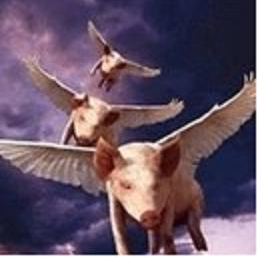81% of the insects tested had parasites, many harmful to humans.
From 90 Miles:

The experimental material comprised samples of live insects (imagines) from 300 household farms and pet stores, including 75 mealworm farms, 75 house cricket farms, 75 Madagascar hissing cockroach farms and 75 migrating locust farms. Parasites were detected in 244 (81.33%) out of 300 (100%) examined insect farms. In 206 (68.67%) of the cases, the identified parasites were pathogenic for insects only; in 106 (35.33%) cases, parasites were potentially parasitic for animals; and in 91 (30.33%) cases, parasites were potentially pathogenic for humans. Edible insects are an underestimated reservoir of human and animal parasites. Our research indicates the important role of these insects in the epidemiology of parasites pathogenic to vertebrates.
Oh, there’s more….

Get rid of the Americans first says the person behind you wanting to eat bugs, own nothing and be happy with it.

From 1 January 2018 came into force Regulation (EU) 2015/2238 of the European Parliament and of the Council of 25 November 2015, introducing the concept of “novel foods”, including insects and their parts. One of the most commonly used species of insects are: mealworms (Tenebrio molitor), house crickets (Acheta domesticus), cockroaches (Blattodea) and migratory locusts (Locusta migrans). In this context, the unfathomable issue is the role of edible insects in transmitting parasitic diseases that can cause significant losses in their breeding and may pose a threat to humans and animals. The aim of this study was to identify and evaluate the developmental forms of parasites colonizing edible insects in household farms and pet stores in Central Europe and to determine the potential risk of parasitic infections for humans and animals. The experimental material comprised samples of live insects (imagines) from 300 household farms and pet stores, including 75 mealworm farms, 75 house cricket farms, 75 Madagascar hissing cockroach farms and 75 migrating locust farms. Parasites were detected in 244 (81.33%) out of 300 (100%) examined insect farms. In 206 (68.67%) of the cases, the identified parasites were pathogenic for insects only; in 106 (35.33%) cases, parasites were potentially parasitic for animals; and in 91 (30.33%) cases, parasites were potentially pathogenic for humans. Edible insects are an underestimated reservoir of human and animal parasites. Our research indicates the important role of these insects in the epidemiology of parasites pathogenic to vertebrates. Conducted parasitological examination suggests that edible insects may be the most important parasite vector for domestic insectivorous animals. According to our studies the future research should focus on the need for constant monitoring of studied insect farms for pathogens, thus increasing food and feed safety.

Keep your bugs. I’ll eat a steak.
I guess I’m on the WEF watch list now.


I think they can keep their bugs and parasites. I will eat grass sawdust and dirt first. And I’m gonna have to be awful hungry to do that.
LikeLike